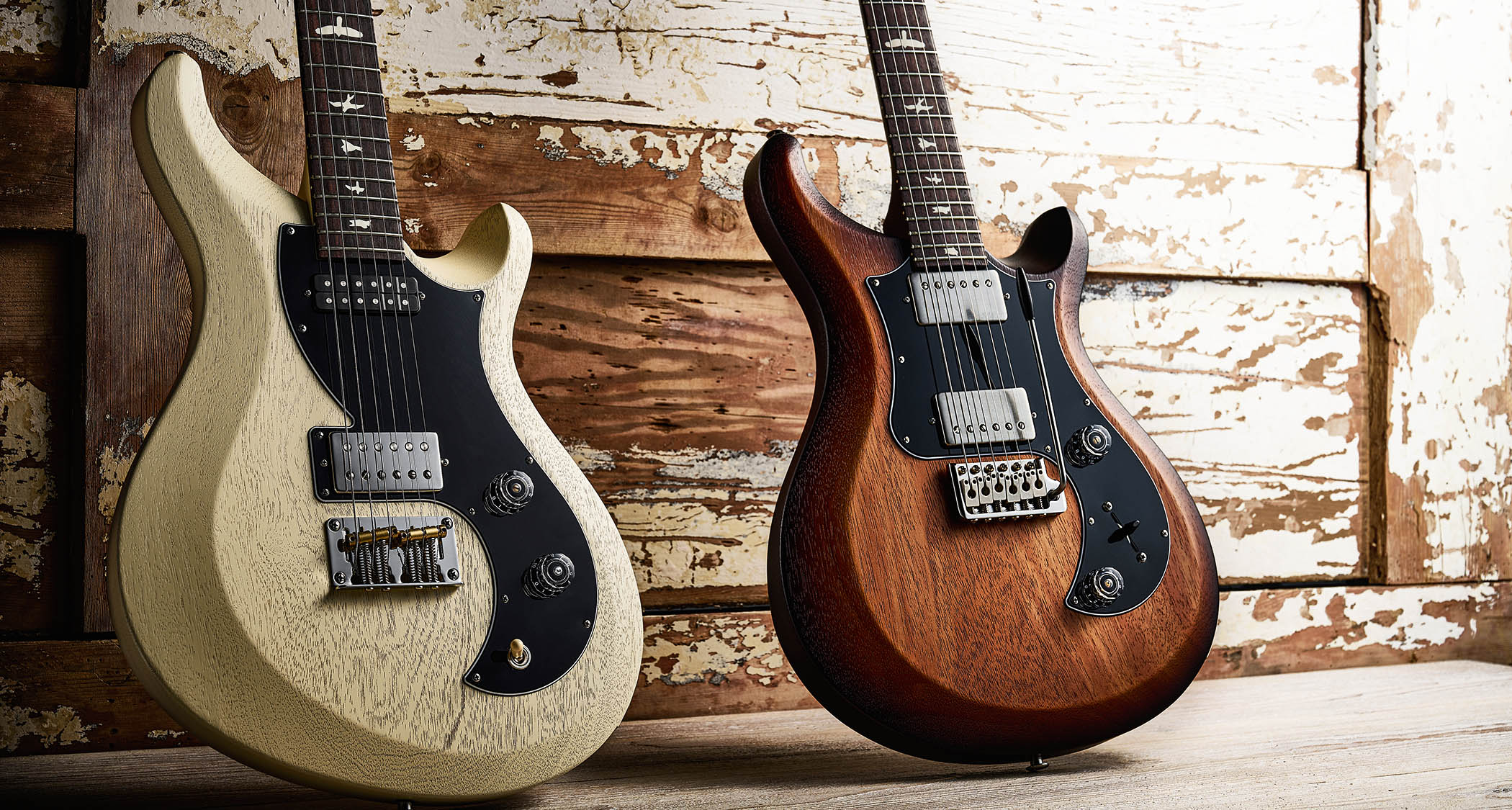
For its first 16 years of production-guitar making, PRS only made its instruments in the USA. When the company finally began to offer the ‘offshore’ Korean-made SE models – now made in Indonesia – it gave the brand a new, much lower price point but also created a large hole, price wise, in between.
From its launch in 2013, the USA S2 line aimed to fill that gap: the essence of PRS, still built alongside the all-singing, all-dancing Core level in Maryland.
The thing is, to achieve the much lower price point, not only was it necessary to streamline and simplify the build process, but the S2 guitars still used pretty much the same hardware, pickups and electronics that feature on those offshore-made SE guitars, which now kick off at $/£499. For some, that was an uneasy mix.
However, last year’s 10th Anniversary S2 models – the limited-edition Custom 24 and McCarty 594 – signalled an impending switch to USA-made pickups. Now for 2024, the entire S2 line uses USA pickups and electrics. However, it’s more of a refresh: aside from those USA components, the range stays exactly the same with a couple of minor specification changes.
As before, the 2024 S2 line – which all feature glued-in (not bolt-on) necks – kicks off with a quartet of the far-from-posh satin-finished models: the Standard 22 and Vela Semi-Hollow, plus the two models we have here, the Standard 24 and solidbody Vela.
The Vela was introduced in 2016 and is the only S2-specific model and PRS’s only offset. The guitars start at $2,049/£1,925, considerably less than the Core guitars, which currently start at just over $4k. Half the money, half the guitar? Let’s take a look.
Standard style
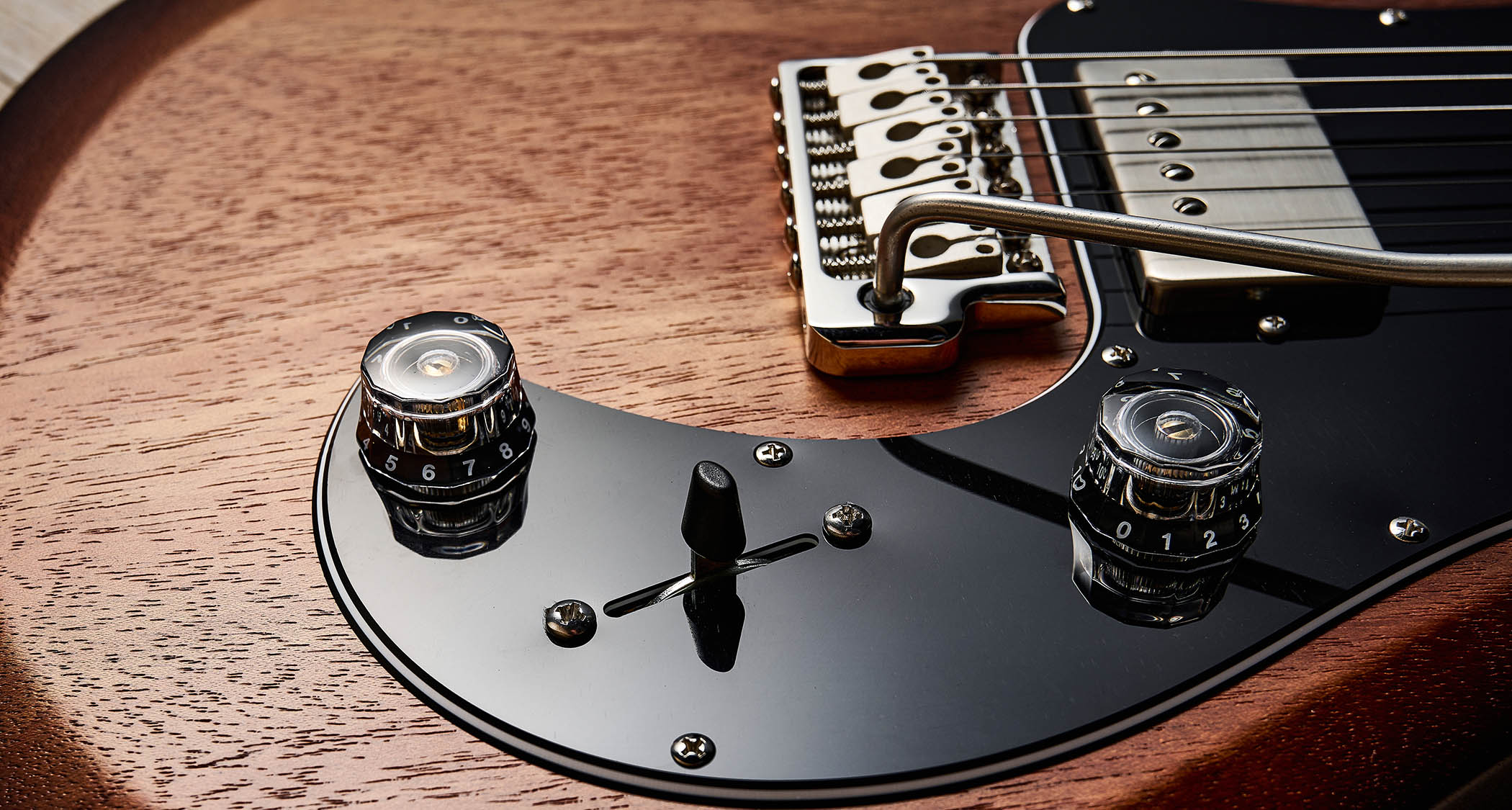
As PRS aficionados will know, ‘Standard’ refers to the all-mahogany style, although today, with that lowly SE CE Standard Satin or the SE Standard 24-08, it can simply refer to an all-mahogany body without a maple top and with a maple neck. But the S2 Standards stick with prior art: they’re all mahogany.
These start-up S2s are the only current satin-finished guitars in the entire PRS range, with the exception of that recent SE CE Standard Satin
There are no Standard models in the Core line-up and no satin finishes. In fact, these start-up S2s are the only current satin-finished guitars in the entire PRS range, with the exception of that recent SE CE Standard Satin.
From the moment you pull one of these start-up models out of its gigbag, the open‑pore satin-finish style shouts out to the working musician, even though for this year the classic dot inlays of the previous S2 satin-finished models now revert to the ubiquitous bird inlays.
All the S2 models use a different top-carve, coined an ‘asymmetric bevel’ by PRS, which was first seen on the Mira and Starla models. This more SG-inspired style means the body thickness drops to 43mm thick overall, although it becomes really quite Fender-like in playing position, with that large bass-side bevel to the top, plus a ribcage contour on the back.
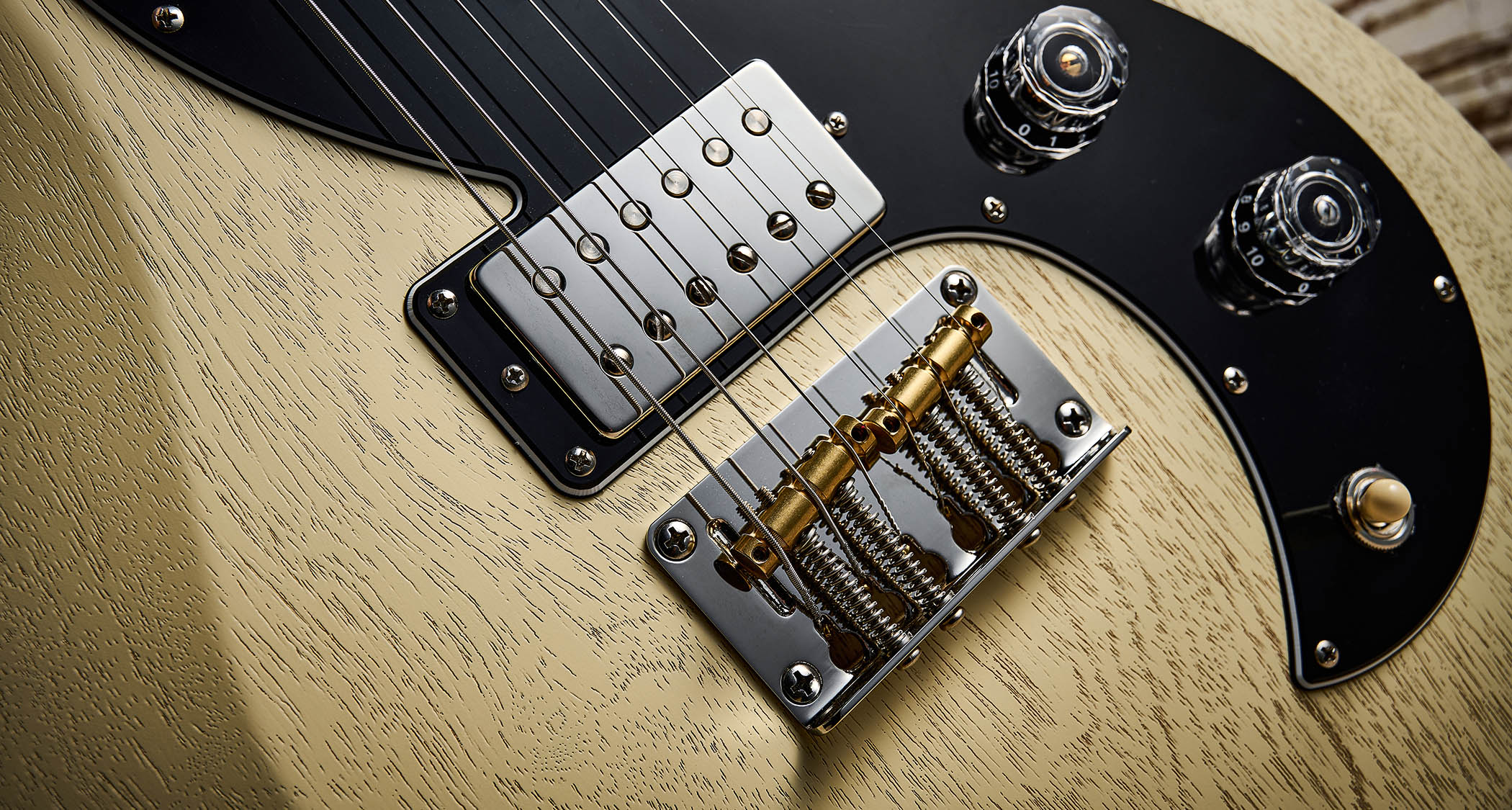
The other main constructional change to the S2 guitars is the neck, which uses a scarfed headstock and heel block, rather than the one-piece design of the Core models. While this three-piece construction is easily visible on PRS’s bolt-on models, such as the CE or Silver Sky, you can slightly see the heel blocks here but not that headstock scarf. In fact, if the spec sheet didn’t tell us otherwise, we’d swear it wasn’t there.
PRS’s original 635mm (25-inch) scale length is used throughout the S2 range, with the exception of the shorter scale used on the three McCarty 594 models, which are also the only models with fingerboard-edge binding.
Those shiny gloss-finish models will also look and feel very different from our models here where the finish sinks into the pores of the mahogany, which clearly isn’t grain-filled. We could argue these might be too utilitarian for the PRS fanbase, but one major thing that’s always been central to the PRS proposition is the perfect craft – and that’s very evident here.
Hardware
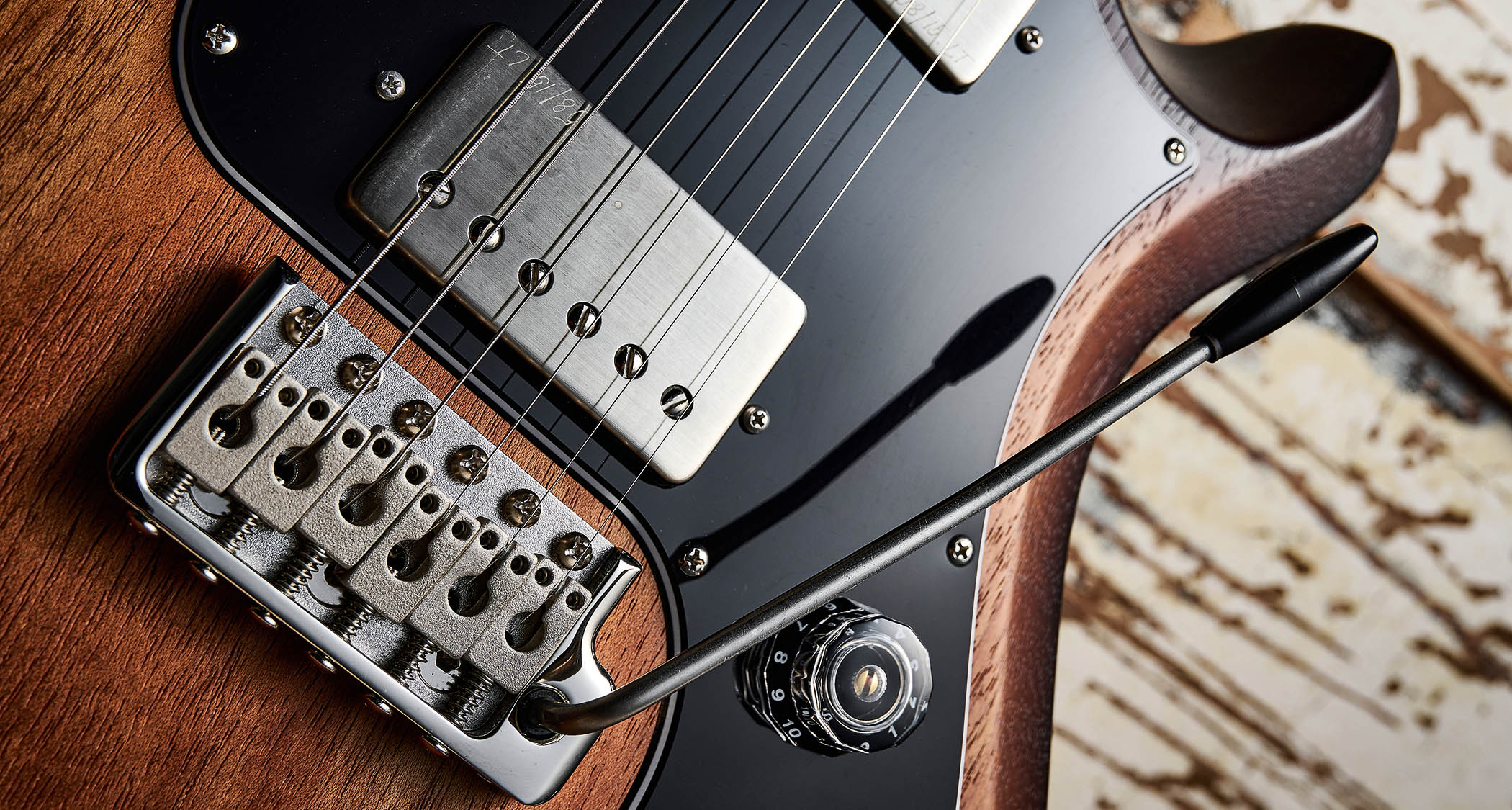
Both guitars use the brass-post, top-locking ‘Low-Mass’ tuners (available as retrofits for the SE line) and two different bridges. The Standard 24 employs the moulded (we’d say cast) not machined all-steel vibrato used on the SE and the USA CE models that’s based on the original PRS vibrato design, while the ‘plate-style’ bridge was engineered specifically for the Vela and is also used on the $/£3k NF53 and Myles Kennedy signature guitars.
It’s a classy format that dates back to pre-production PRS designs and uses two brass barrel saddles angled to allow pretty much bang-on intonation. The baseplate is nickel-plated steel and the strings top-load in keyhole slots behind the saddles.
Finally, we get to the new bits: the USA pickups. Our Standard 24 uses the 58/15 LT treble and bass humbuckers like the majority of the range, with the exception of our Vela, which goes for the DS-01 humbucker at the bridge and a Narrowfield humbucker at the neck, the Custom 24, which uses 85/15 treble and bass ’buckers, and the Custom 24-08, which features the narrow TCI humbuckers.
Feel & Sounds
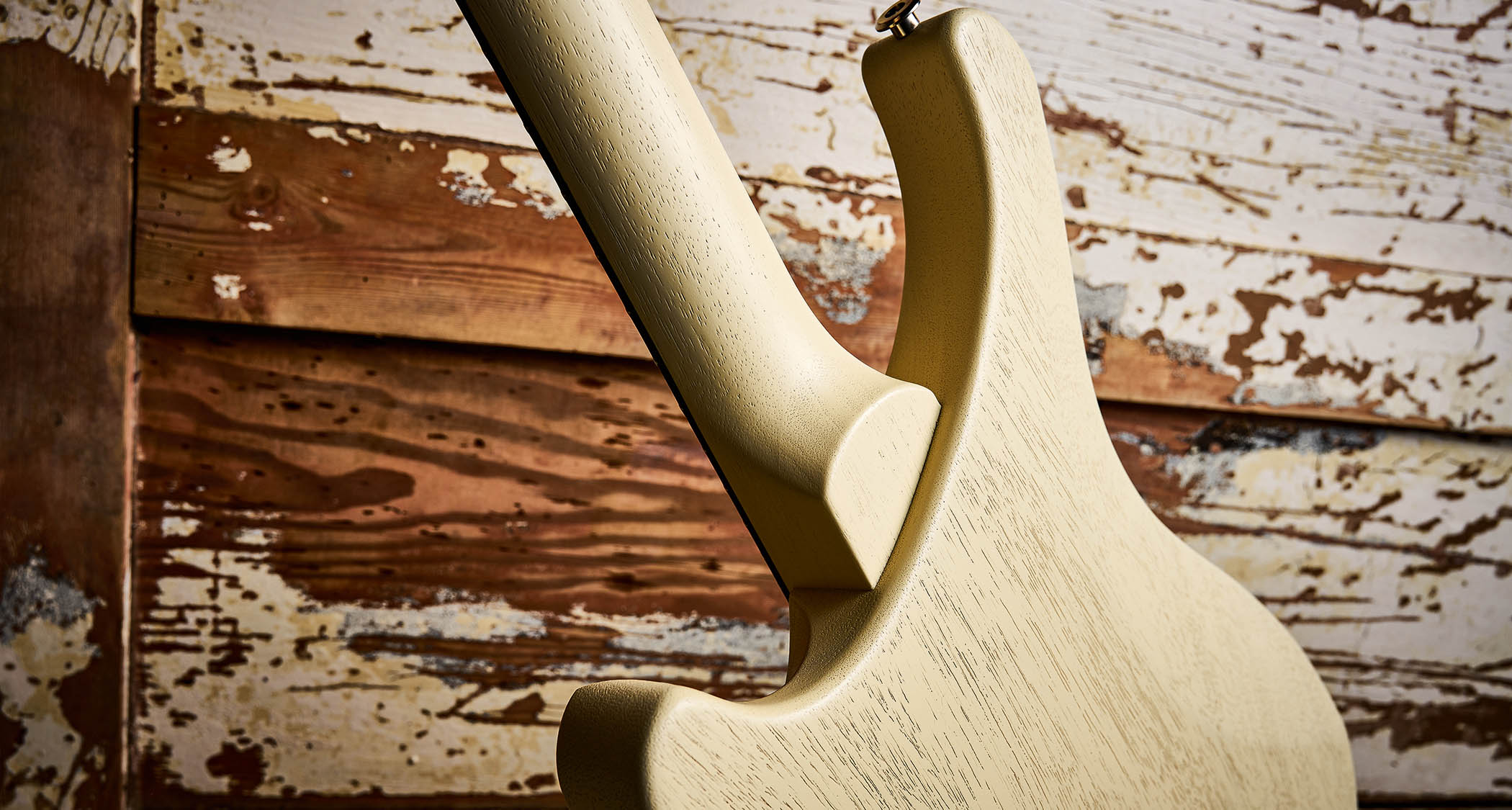
As we’ve often expressed, the faultless gloss-finished craft, not to mention the cost, of PRS’s Core guitars means that we’re almost scared to actually test them. It’s the opposite here. Both these guitars look and feel very much like working tools and, of course, their thin finishes will mark and begin to ‘age’ very quickly in use.
Over the past decade the S2 range has offered more affordable USA guitars with their own more ‘alternative’ style
Perhaps surprisingly, however, bearing in mind their similar size and materials, there’s quite a weight variance: the Vela comes in at a very light 2.65kg (5.83lb), while the Standard 24 is heavier but far from overweight at 3.39kg (7.46lb). And while weights aren’t specified, neck profiles are: our Standard 24 goes for the Pattern Thin, the Vela the Pattern Regular.
The difference? Well, the Regular is slightly thinner at the nut – 42.06mm as opposed to 42.86mm, PRS tells us – and the Thin is thinner in depth at the nut at 19.84mm, as opposed to the Regular’s 21.43mm. Our measured dimensions support that with the Vela’s nut width measuring 42mm; the Standard 24’s is 43.2mm.
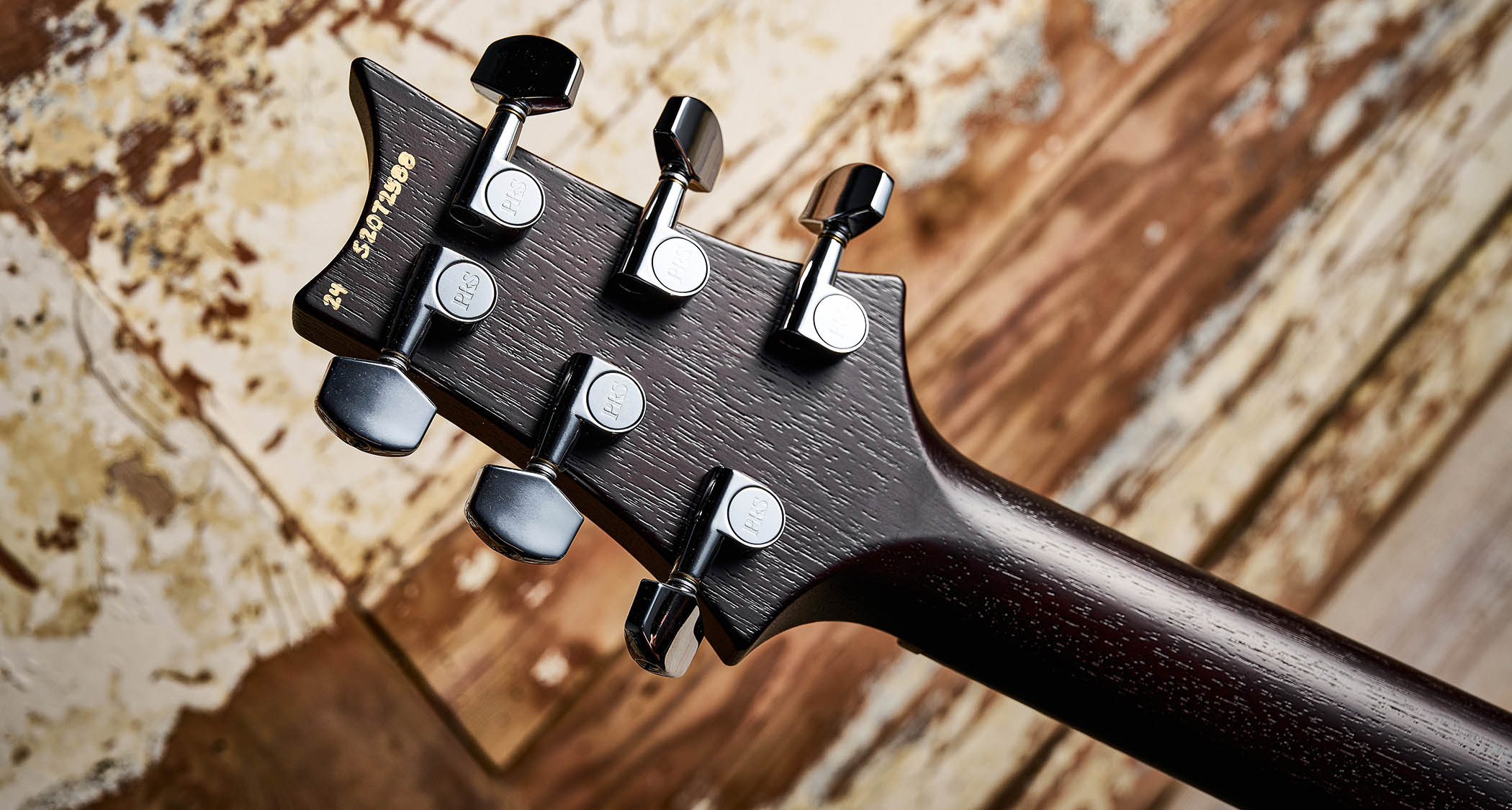
In terms of 1st-fret depth, the Vela measures 21.5mm, the Standard 24 is 21.1mm, and at the 12th fret we get 23.5mm on the Vela and 22.8mm on the Standard. Both necks have a pretty classic ‘C’ profile, the same fingerboard radius and frets (which we measured at 2.66mm wide and 1.14mm high), and that same slightly in-turning curve and rolled edge to the fingerboard edges.
Put simply, they’re not a million miles apart in feel. Likewise when strapped-on: while the extended upper shoulder of the Vela gives slightly more of a Strat-y vibe, both feel exceptional, not least with the lower profile bevelled-edge body.
And yet while the scale length and construction might be the same, the combination of the different bridges, different pickups and the way they’re wired give us two quite distinct voices, albeit with plenty of similarity. First off, there’s not a bad sound to be had from either. We’re not reaching for the tone control to pull down excessive highs; there aren’t any. In PRS’s post-TCI world, those imbalances are a thing of the past.
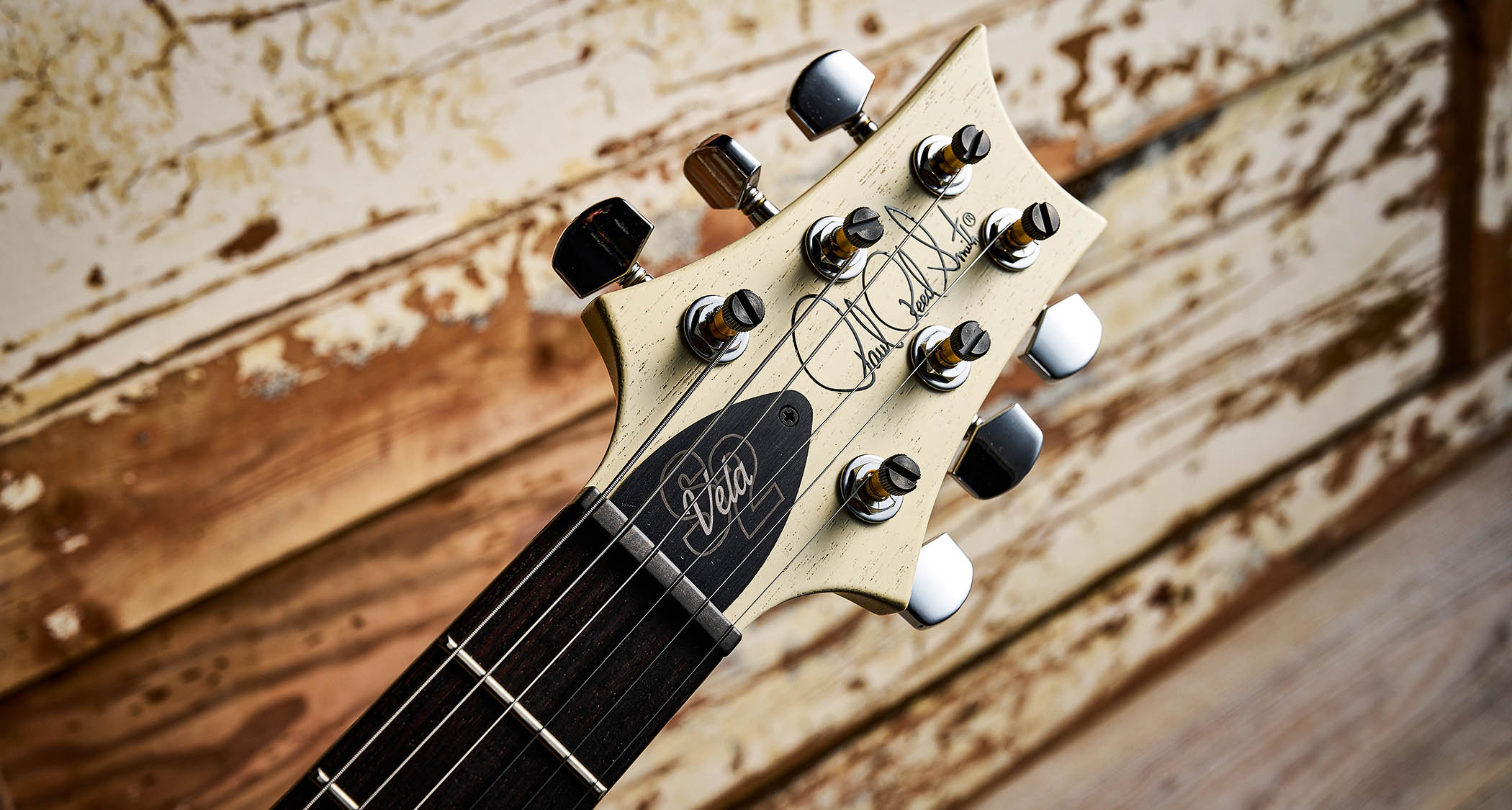
The Standard’s 58/15 LT pickups offer classic, quite beautiful and very musical humbucking voices. They’re not overpowered, but they don’t sound weak or thin at the bridge or over-thick and sludgy at the neck, either.
In part due to its placement after the 24-fret neck, the neck pickup has nice clarity to the attack, which sounds very vocal, clear and soulful. Kick in a boost and blues rockers worldwide will be at home for their expressive solos.
Back to the bridge and there is a little snarl to the attack, but it’s certainly not over-thin and is very responsive to your pick attack: pull back and you could be playing a single coil; dig in and the sound matches you.
The two inner single coils (position 4) throw us across to the Fender-y tracks – a little bit Tele, little bit Strat. Position 2 does the same but with a slight extra push, while the twin‑humbucker mix is fuller yet still has that parallel-wired bounce.
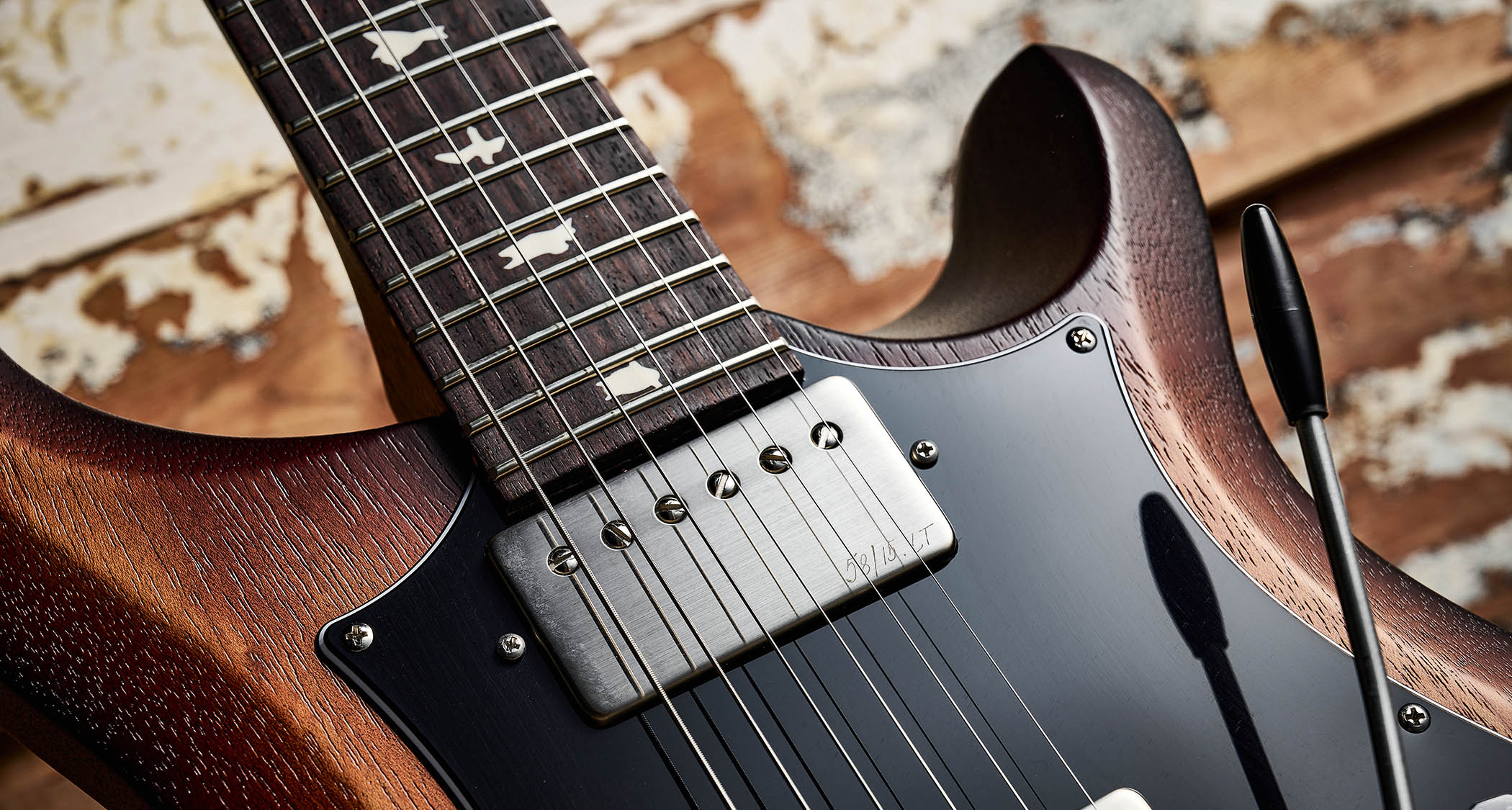
As for the Vela’s voice, at the bridge it’s a little more snarly without touching our amp or pedalboard, like a good Filter’Tron but without the shrill highs, though there’s nothing dark or over rounded here. It’s definitely a bit more roots-rock, with a little more character.
The partial split (which primarily voices the slug coil) is especially good, too, nodding back to a Tele, and certainly not over-thin or anaemic. The Narrowfield at the neck actually sounds very slightly thicker than the 58/15 LT of the Standard 24 and not as overly focused as the narrow aperture might suggest.
It’s a big voice on this platform and both mixes are delicious. That single coil character of the split humbucker with the Narrowfield is particularly good, with the mismatch of styles working in its favour.
Verdict
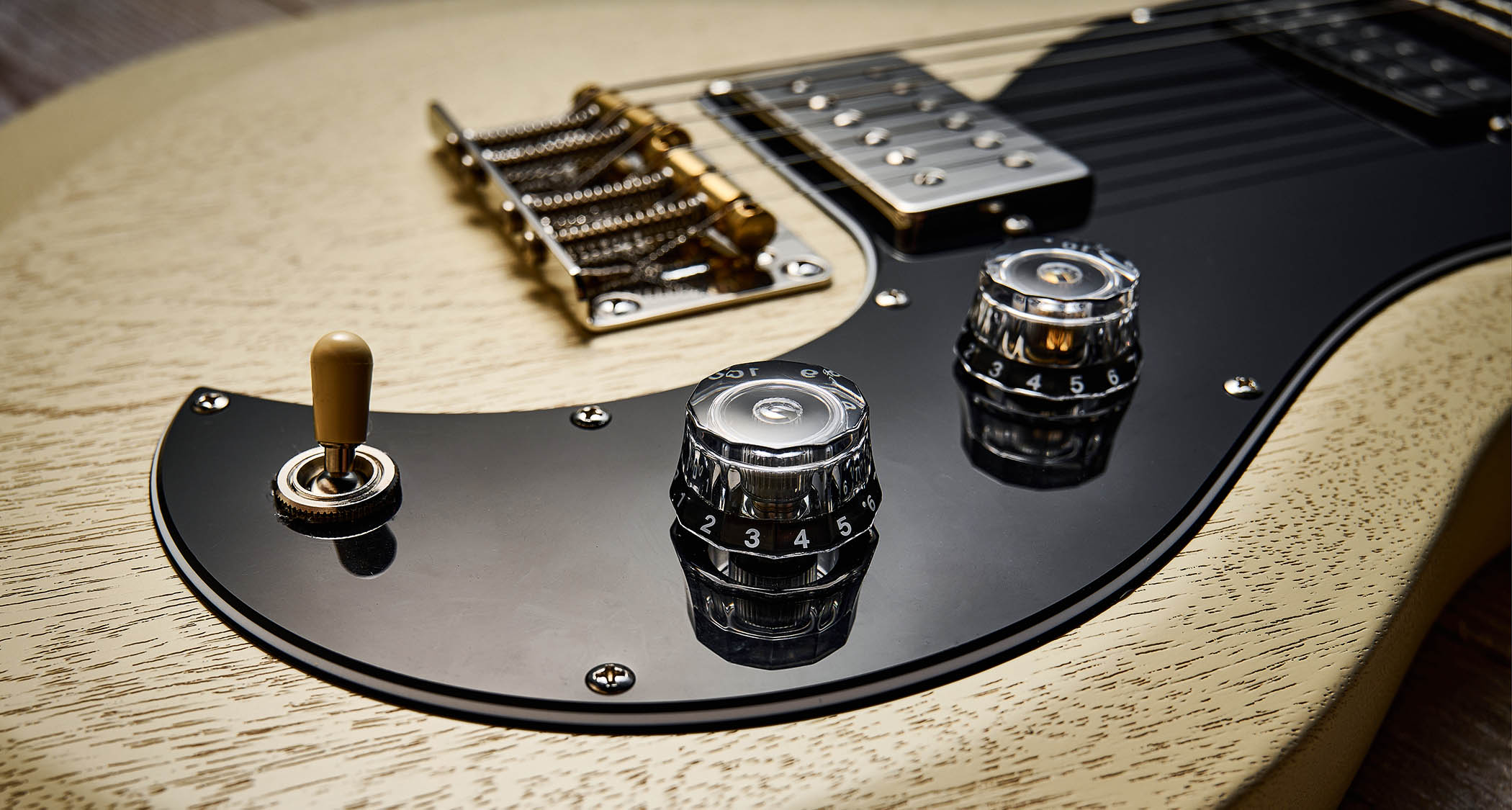
Over the past decade the S2 range has offered not only more affordable USA guitars but ones that have their own, arguably more ‘alternative’ style with that simplified bevel top and those big scratchplates.
Of course, PRS Core lovers might see them as a bit cut-price, considering that up to this point the S2s have used the same pickups, electrics and hardware as the SE guitars. Now, while the 2024 refresh includes legit US pickups and electrics, it also comes with a $/£300 price rise on our samples, just under 20 per cent.
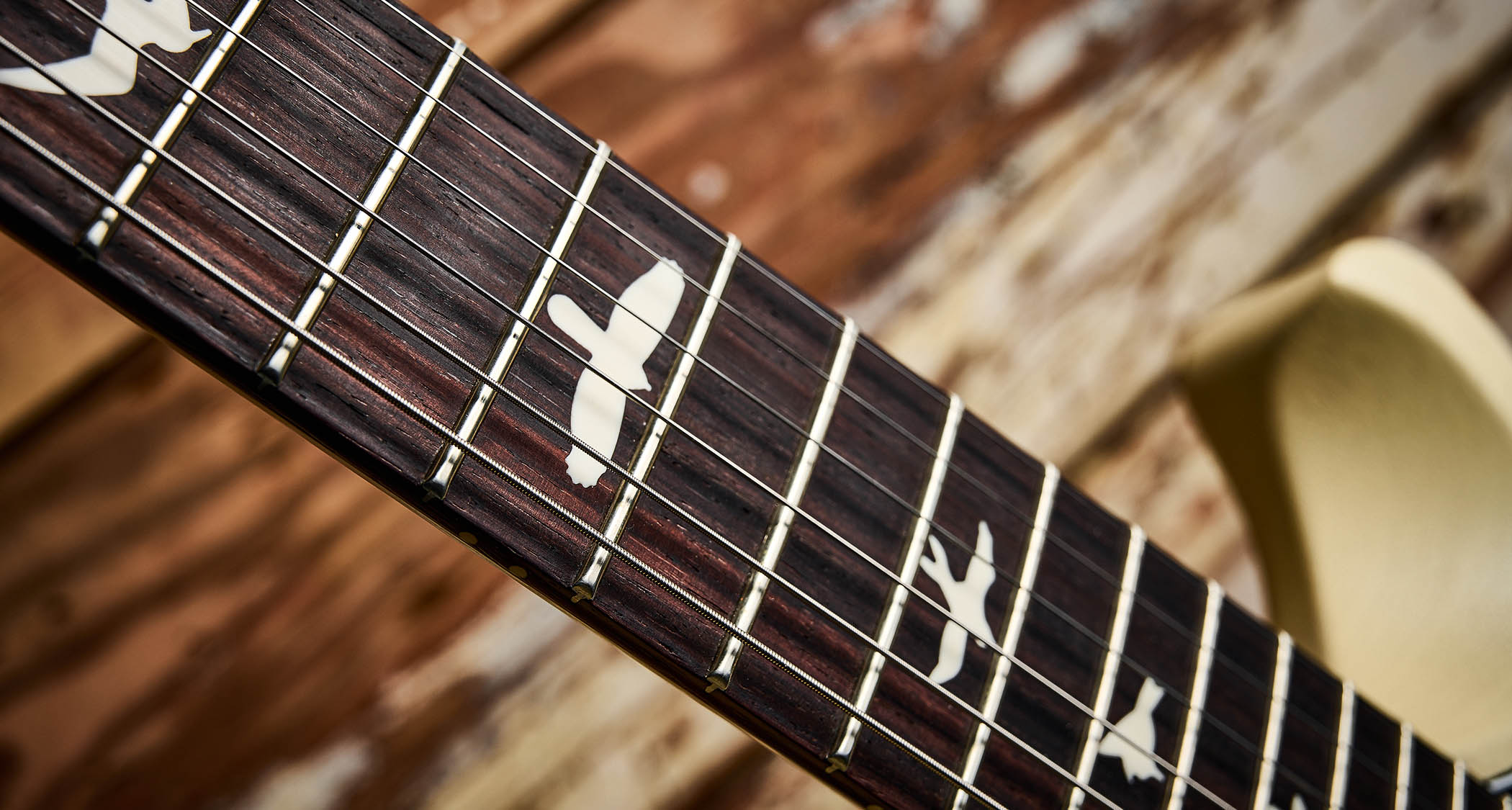
To be honest, that doesn’t seem excessive – how much is a posh set of pickups and a new wiring loom? – but, on paper at least, it does make these quite simple satin-finish guitars seem a little pricey. Nevertheless, the immaculate craft and lutherie on display is unmatched and the workhorse style is enhanced by quite exceptional, wide‑ranging sounds.
The classic Standard 24 really has its roots in the very early days of PRS and is a no-brainer for the working musician who needs to coax humbucking and single-coil sounds from one guitar. It’s effortlessly in tune and has one of the best vibratos out there (irrespective of where it’s made).
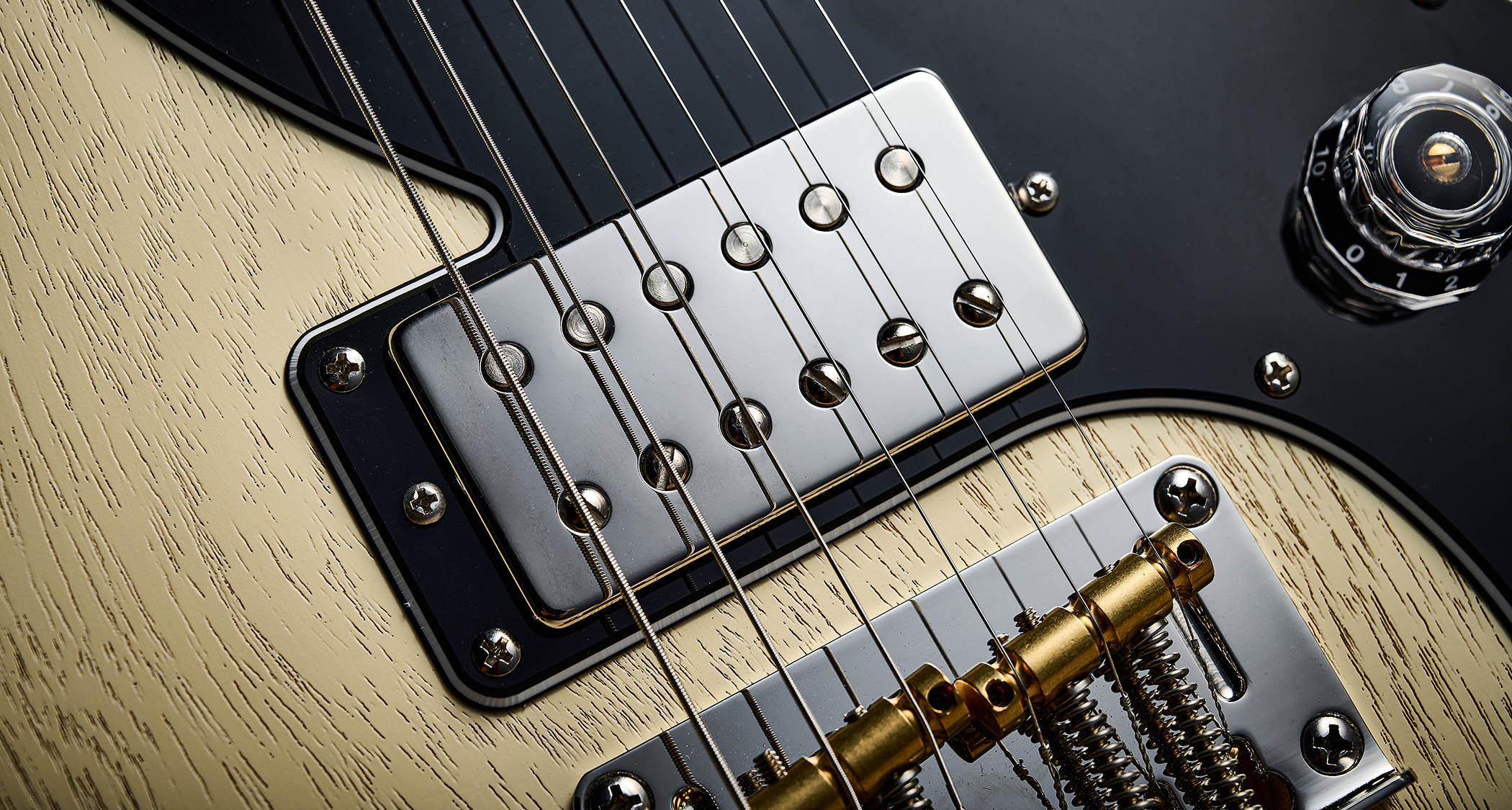
The Vela is now a real outlier in the PRS range; the Mira and Starla have been shelved, leaving this one guitar to appeal to a potentially large group of players.
To PRS, it’s just one arrow in a pretty full quiver and does seem rather isolated. But for the roots-rockers out there, it’s a seriously good musical tool. Maybe PRS should start an off-shoot company in Seattle that just makes Velas with funky finishes, a vibrato option and all sorts of boutique garb…
In the meantime, any guitar maker anywhere in the world needs to check out the craft here. 40 years on, PRS is still setting standards that other brands would do well to study very closely.
Specs
PRS S2 Standard 24 Satin
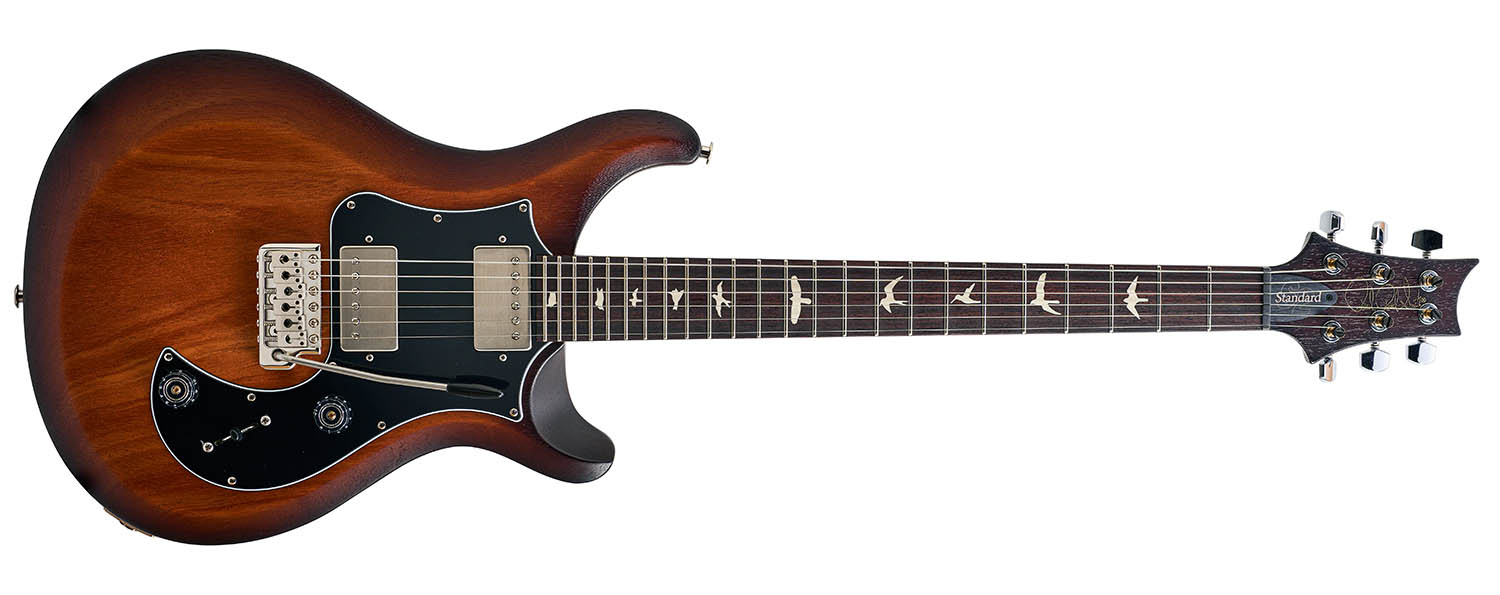
- PRICE: $1,729 / £1,925 (inc gigbag)
- ORIGIN: USA
- TYPE: Double-cutaway solidbody electric
- BODY: Mahogany with ‘asymmetric bevel’ top carve
- NECK: Mahogany, pattern regular profile, glued-in
- SCALE LENGTH: 635mm (25”)
- NUT/WIDTH: Friction reducing/43.2mm
- FINGERBOARD: Rosewood, bird inlays, 254mm (10”) radius
- FRETS: 24, medium
- HARDWARE: PRS vibrato (cast), PRS Low Mass locking tuners – nickel-plated
- STRING SPACING, BRIDGE: 52.5mm
- ELECTRICS: PRS 58/15 LT Treble and Bass humbuckers, 5-way lever pickup selector switch, master volume and tone
- WEIGHT (kg/lb): 3.39/7.46
- OPTIONS: Colour only
- LEFT-HANDERS: No
- FINISHES: McCarty Tobacco (as reviewed), Vintage Cherry, Charcoal, Antique White – open-pore satin nitrocellulose
PRS S2 Vela Satin
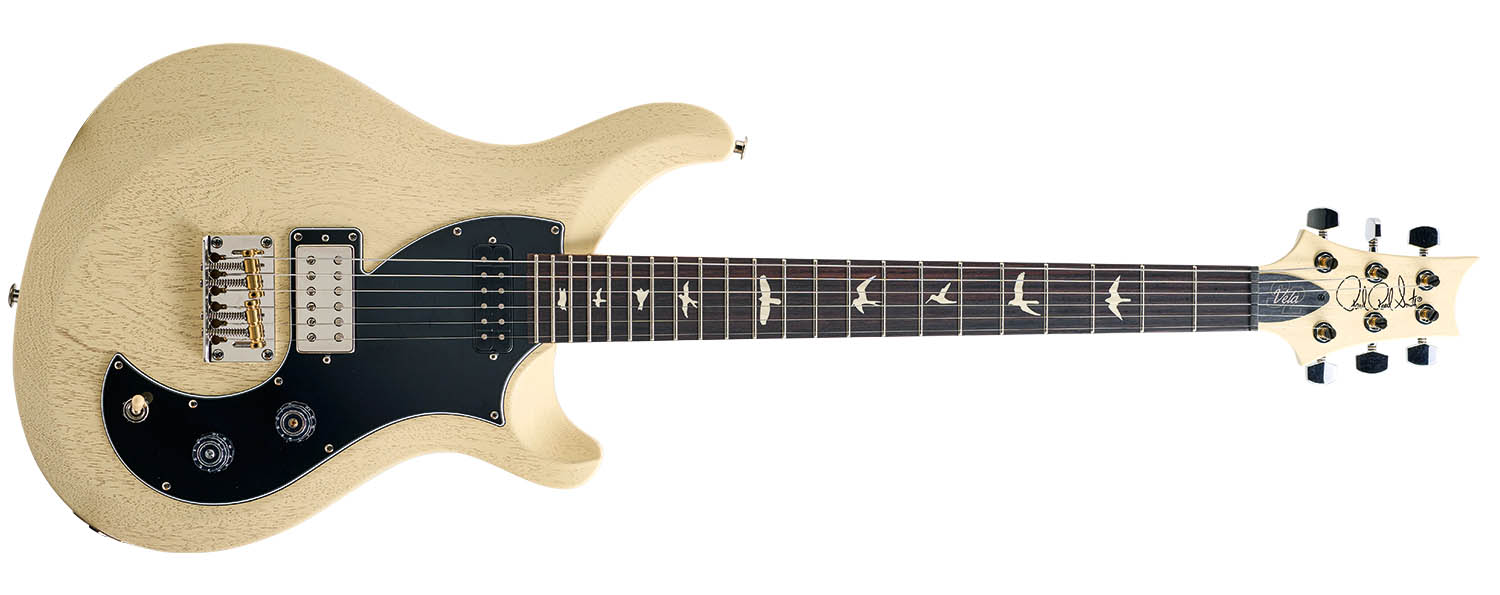
- PRICE: $1,749 / £1,999 (inc gigbag)
- ORIGIN: USA
- TYPE: Offset double-cutaway solidbody electric
- BODY: Mahogany with ‘asymmetric bevel’ top carve
- NECK: Mahogany, pattern regular profile, glued-in
- SCALE LENGTH: 635mm (25”)
- NUT/WIDTH: Friction reducing/42mm
- FINGERBOARD: Rosewood, bird inlays, 254mm (10”) radius
- FRETS: 22, medium
- HARDWARE: PRS ‘plate style’ top-load bridge, PRS Low Mass locking tuners – nickel-plated
- STRING SPACING, BRIDGE: 52.5mm
- ELECTRICS: PRS DS-01 (bridge) and PRS Narrowfield (neck) humbuckers, 3-way toggle pickup selector switch, master volume and tone (with pull-switch to split the bridge pickup only)
- WEIGHT (kg/lb): 2.65/5.83
- OPTIONS: Colour only
- LEFT-HANDERS: No
- FINISHES: Antique White (as reviewed), Vintage Cherry, Charcoal, McCarty Tobacco – open-pore satin nitrocellulose
- CONTACT: PRS Guitars







